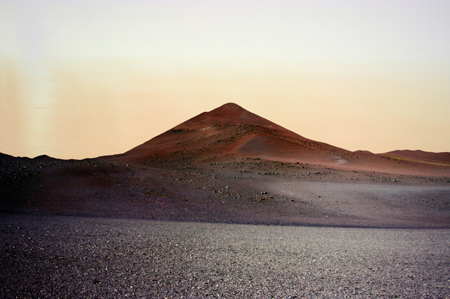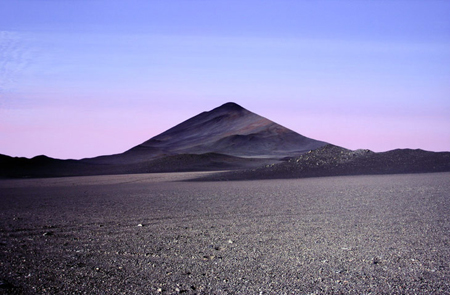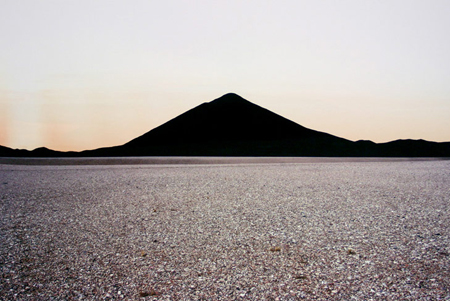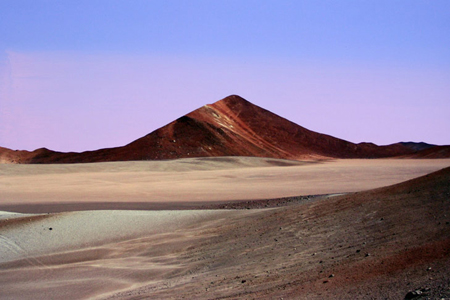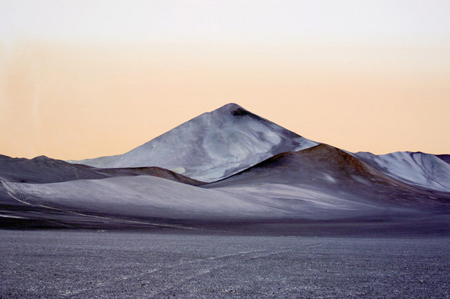The Possibility of a Mountain
Persijn Broersen & Margit Lukács
Manifest Destiny, 2009
Serie of silkscreens, 120 x80 cm.
In the silk-screens one sees an imaginary sky that is silkscreened over photographs of a barren desert where some of the Mars mobiles have been tested. In these works Broersen & Lukacs investigate the notion close up and distance, of horizon and the frontier, in relationship to the American tradition of the sublime landscape.
James Turell
Roden Crater, 1979 – 2011
Roden Crater is an extinct volcano crater northeast of Flagstaff, Arizona. Artist James Turrell purchased the 400,000 year old, 3 km wide crater in 1979 and has been transforming it into a massive naked-eye observatory, designed specifically for the viewing of celestial phenomena. He stated that he plans to open the crater for public viewing in 2011.
TIMES-ONLINE: Man-made volcanoes may cool Earth
August 30, 2009
THE Royal Society is backing research into simulated volcanic eruptions, spraying millions of tons of dust into the air, in an attempt to stave off climate change. The intervention by the Royal Society comes amid tension ahead of the United Nations-sponsored climate talks in Copenhagen in December 2009 to agree global cuts in carbon dioxide emissions. Preliminary discussions have gone so badly that many scientists believe geo-engineering will be needed as a “plan B”.
The interest in so-called aerosols is linked to the eruption of Mount Pinatubo in the Philippines in 1991, the second largest volcanic eruption of the 20th century. The explosion blasted up to 20m tons of tiny sulphur particles into the air, cooling the planet by about 0.5C before they fell back to earth. The Royal Society is Britain’s premier science institution and its decision to take geo-engineering seriously is a measure of the desperation felt by scientists about climate change.
Based on a text by Jonathan Leake, Environment Editor of The Times.
